Buddhism in Coastal Karnataka
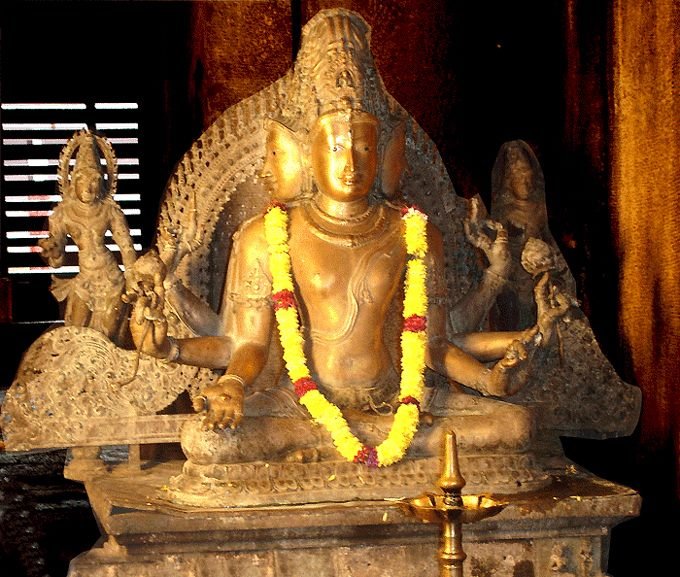
Buddhism was widespread in coastal Karnataka during ancient times. Buddhist statues are found in various places like Kadri in Mangalore, Haigunda, Babruwada and Mulur-Udupi. Kadri also had a Vajrayana Buddhist vihara.
Kadarika Vihara
Three most exquisite and rare Vajrayana Buddhist idols made of Panchaloha (5 metal alloy) are found in the Manjunatha Temple in Kadri, Mangalore in Coastal Karnataka. These statues from the 10th Century CE are of Bodhisattva Manjusri, Bodhisattva Avalokitesvara and the Buddha. This was the site of a Mahayana / Vajrayana Buddhist vihara named ‘Kadarika Vihara’, as evident from the inscription found at the base of the Manjusri idol. According to the inscription [Ref 1] the idol was commissioned by Alupa King Kundavarman in Kadarika Vihara (dated 968 CE).

One of these statues, 5ft in height with six hands and three faces was identified by historians to be an Avalokitesvara statue. The reason for the identification was that the inscription on the pedestal on which the statue is placed states that it is a statue of Lokesvara. However, we can see that there is an image of Buddha Akshobhya on his crown, with earth touching mudra. From this it can be inferred that this is the statue of Manjusri and not Avalokitesvara. Buddha Akshobhya is also visible on the prabhavali behind the statue. It is possible that the pedestal of this statue originally belonged to the other statue which is of Avalokitesvara. Manjunatha (འཇམ་མགོན།) is another name for Manjusri, and that is the name with which the temple is renowned now. Presently, this is a Siva temple and the central sanctum has a Linga. (So, currently locals take Manjunatha as a name of Siva. From Kadri, the name has also propagated to another Siva temple at Dharmasthala) Manjusri statue’s six hands show six different mudras. Presently, a book published by the temple (Kadri Sri Manjunatha Devasthana – Kshethra Mahathmya Matthu Ithihasa by the historian Dr. Gururaja Bhat) considers this statue to be of Trilokeshvara.
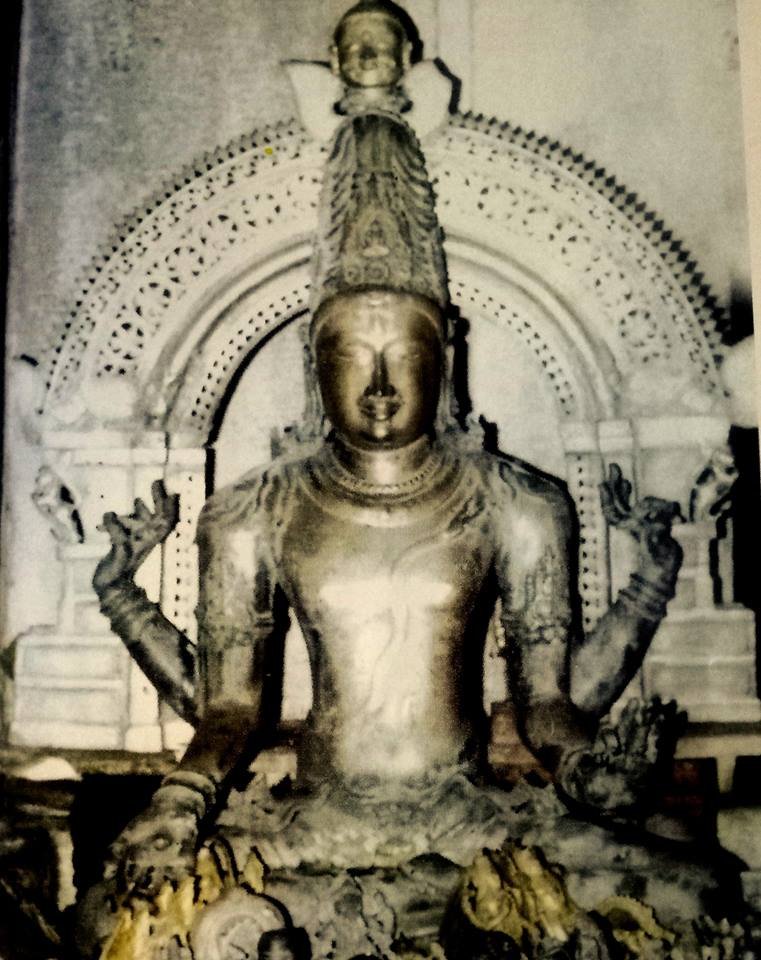
The Avalokitesvara (Lokesvara) statue is of 4ft height, and has one head and four hands. Buddha Amitabha with dhyana mudra is visible on his crown. Presently, a book published from the temple considers this both as Manjusri and Vishnu. The third is a Buddha statue of 3ft height. This is currently considered to be the statue of Vyasamuni by the temple authorities. A small Buddha carving is also visible on a temple pillar in front of the sanctum sanctorum (garbha griha). From this, it may be inferred that this temple was originally Kadarika Bauddha Vihara (Monastery) mentioned in the inscription.
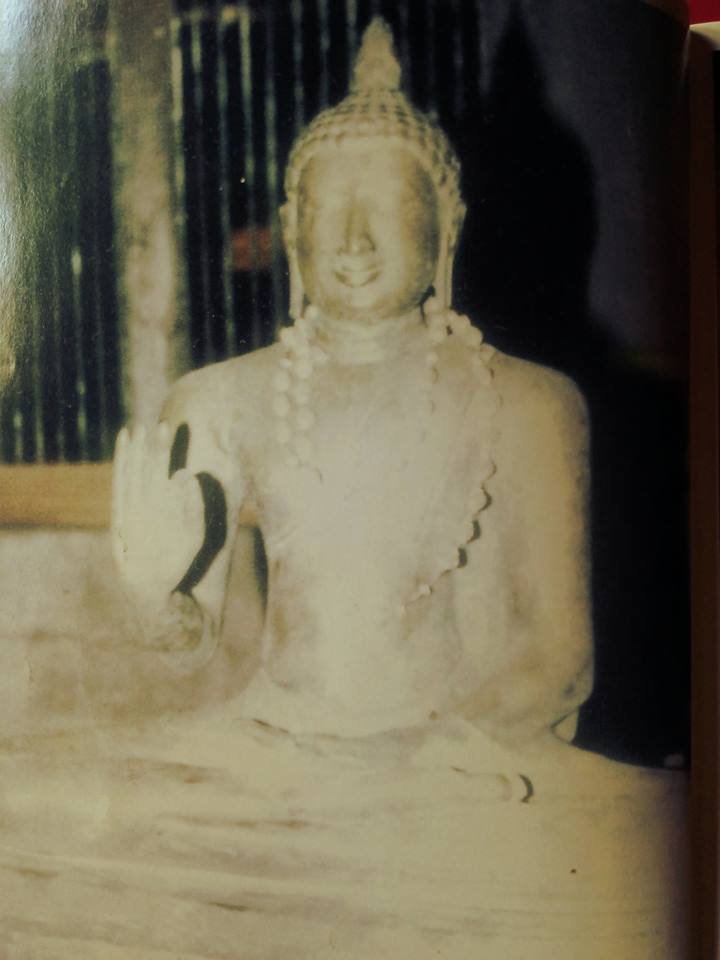
The temple also hosts statues of Mahasiddhas such as Mathsyendranath, Gorakhnath and Chowranginath. Another statue of Mathsendranath obtained from the same temple is also kept in the Mangalore Archeological Museum. These three Mahasiddhas are part of the 84 Mahasiddhas of Buddhism, and also are the founders of Nath tradition. This temple is a clear case of how Buddhist teachings flowed into the Nath tradition and established secretly within the Saivite system at a time when the survival of Buddhism became difficult in many parts of India. For many centuries, Buddhist lineages survived secretly in India within the Nath tradition. There is currently a Nath Sampradaya Matha and some laterite caves in the hillock behind the Temple.
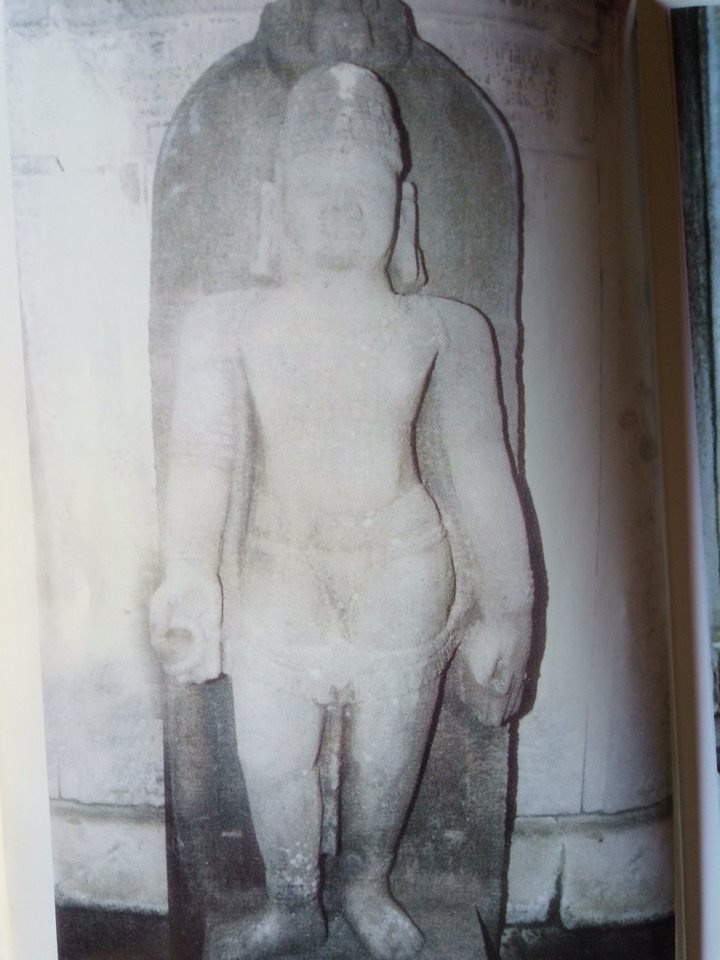



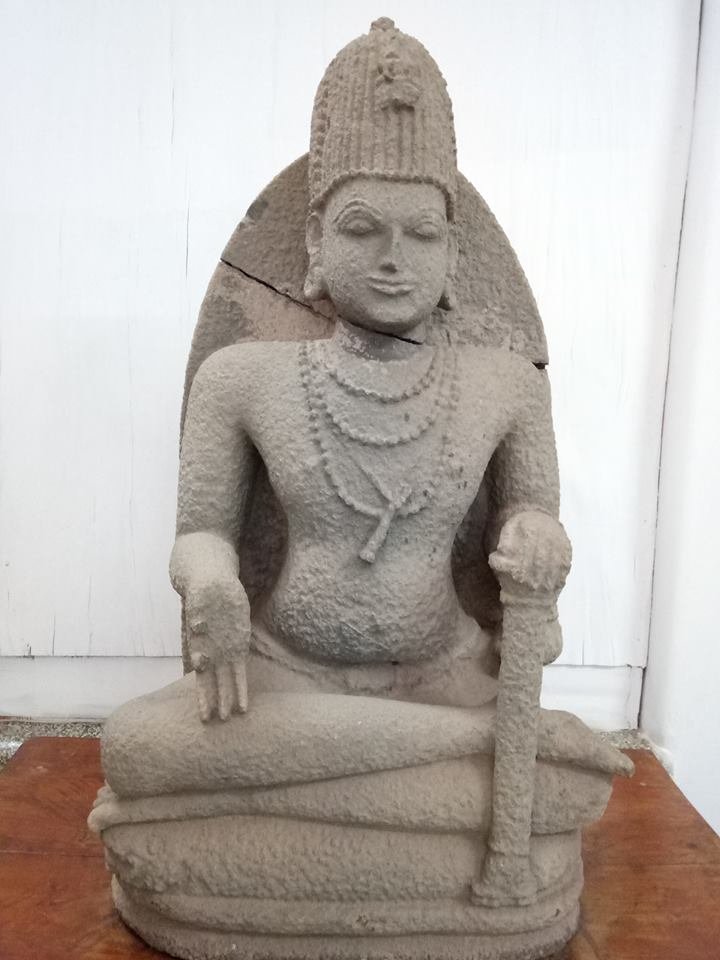
Haigunda
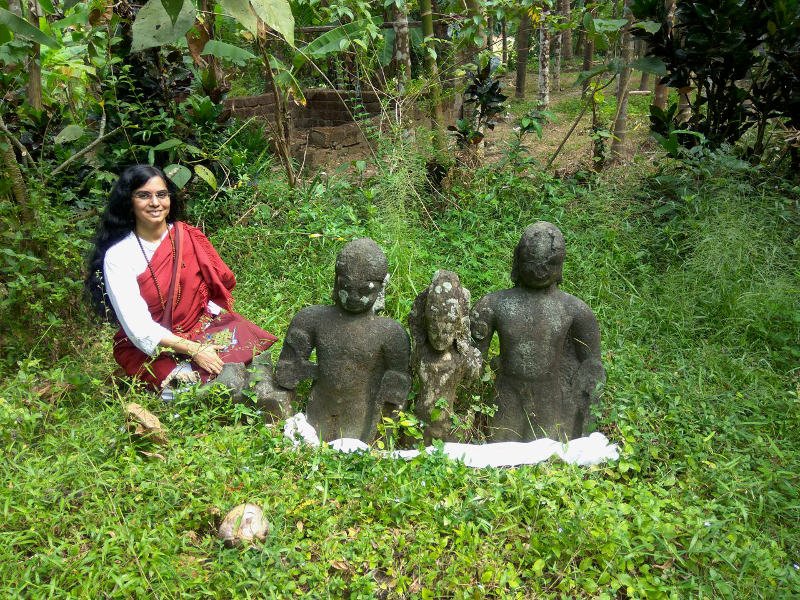
In the middle of the River Sharavathi in the Honnavara Taluk in coastal Karnataka is a small, scenic and serene island called Haigunda. Till recently, the only way to reach this island was to take a boat to cross the river. A new bridge was constructed recently. However, there are no roads on the island. Sometimes one has to walk through water pipes and wooden logs. Though there is a small farming community there, the island gives an out of the world feel as one lands there. There is a temple, a mosque, a sacred grove (kavu), and some ancient Buddhist remains there.
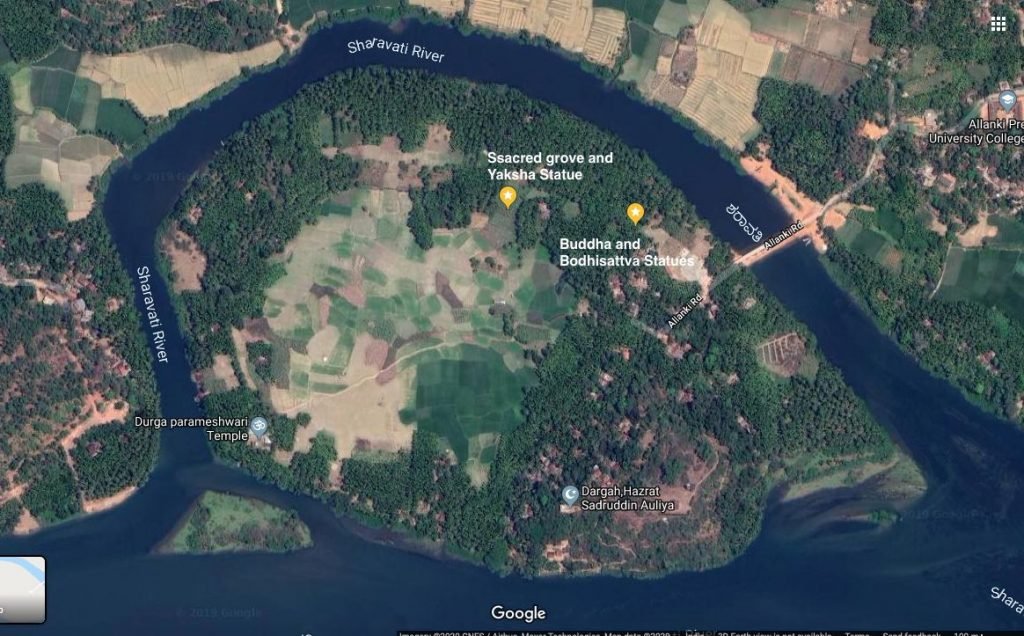
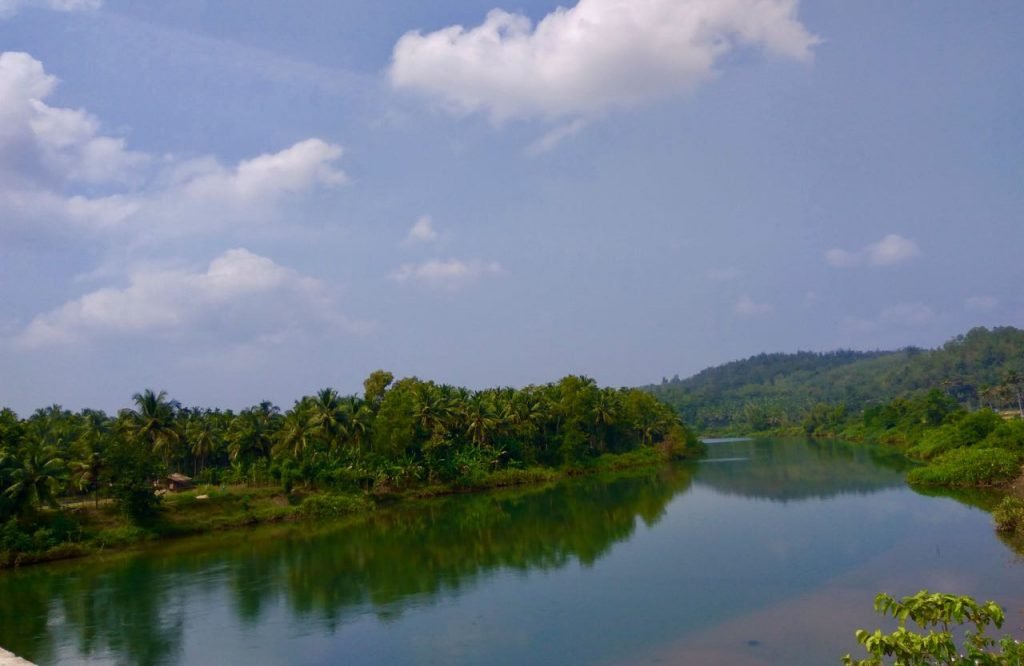
Most importantly, the two Buddha statues found here are the oldest of the Buddha statues to be discovered in Karnataka. This could very well be related to the continuation of Banavasi Buddhist settlement that flourished in the early part of the first millennium under the rule of Satavahanas and Chutus. This island is only 70km to the west of Banavasi across the not so high part of Western Ghats. In the later period, Buddhism continued to be preserved in this island under the rule of the Alupa kings of coastal Karnataka (South Konkan).
The style of the Buddha statues found here indicates that it could be from between 3rd to 5th Century CE. There is also a statue of Bodhisattva next to it. These three standing statues have their hands and legs broken. The Buddha statues are identifiable from the Ushnisha and the upper garment over the left shoulder.
Haigunda island would have been under the Chutu dynasty of Banavasi in this period and Buddhism from Banavasi would have naturally reached here. The island provided an idealistic setting for a Vihara, away from the mainland. The ancient statues of Haigunda were originally discovered and identified by A. Sundara [Ref 2]. According to him, there is a copper plate inscription of Chitrasena Kella, ruling from Ambudvipa, also known as Payyvegunda (earlier name for Haigunda) granting a land named kanasapukkolli and a garden (vana) in Napitapalli to the Arya Sangha. He also reported the remains of a brick structure on this island as the possible remains of an ancient Stupa. However, we could not locate the brick structure there and is probably already destroyed as people would have taken out those bricks for construction.

Deep inside the island, there is a kavu (sacred grove) of thick forest and there stands a solitary Yaksha with a big tummy, whom the locals call as Babru. From the styling of this statue, this could have been also from a similar era. This would have been a guardian figure of Buddhism.
It may be recollected from Buddhism in Banavasi, an Archeological Treasure Trove, that though Banavasi was the earliest known Buddhist center in Karnataka, only some plinth level remains of stupas and viharas were found there. Buddha statues were not found from Banavasi. The statues in Haigunda may be seen as the remaining samples from the same civilization.
Later, during the Brahminical dynasty of Kadamba, this island became a favored spot for Vedic rituals. At the opposite corner of the island, there is a temple where some Vedic chantings are carried out seasonally. There is also a Masjid on another part of the island.
Babruwada

(Courtesy for the left side image – Ref 3 )
Further north along the Karnataka coast after Gokarna is the coastal town of Ankola. There, near the seashore is a temple of Babru from which that village gets the name Babruwada. Babru in the local tongue means a local guardian deity. An earlier study [Ref 3], has a photo of the statue taken before 2007 CE. From that photo, it was clear that we can expect to see a grand Buddha statue in Ankola. That statue seemed to be from the 4th or 5th Century CE. Being very close to the seashore, there was heavy weathering of the statue and hence the facial features were not clear. This would have made people confuse the Buddha statue to be a local guardian. So, they called him Babru. That statue was of a Buddha seated on a lion throne with hands in dhyana-mudra. Though the face was worn out, Ushnisha and Utthariya (upper robe) were visible in the photo though there was significant weathering.
However, we were in for a surprise, as we reached the place. There was a new temple with a new statue. What we could gather from the villagers is that someone came up and offered them to renovate the temple. They offered them a new statue and took away the ancient statue. And, the villagers continue to worship the new statue as their Babru. The new statue is made almost like the old one with robe, lion throne, etc., except for the addition of the facial features. Since Ushnisha is missing in the new statue, some locals consider it to be Mahavira and they have kept a few small Jain statues there. For the villagers, it is still Babru, and they do the worship considering it as their local god.
We tried to find out the whereabouts of the original Buddha statue. On inquiry, we heard different stories from the villagers. Some believe that the old statue was immersed in the ocean as it was considered inauspicious to keep a worn-out statue. Some others said that it can be seen by the side of the National Highway at some distance away from that place. However, we could not spot it there. Some others felt that it was probably taken to a Museum in Dharmasthala. We checked about it at the Manjusha Museum in Dharmasthala, and even the Museum authorities there were not aware of it. Thus, unfortunately, a grand statue which is significant to the history of coastal Karnataka is lost for the time being.
Ancient presence of Buddhism around Gokarna is also evidenced by a copper plate inscription of the king Ashankitavarman of the Bhoja dynasty. They ruled over Goa and some part of coastal Karnataka from 3rd-6th century CE. The inscription mentions about grants to a Buddhist vihara in Hiregutti near Gokarna [Ref 2].
Mulur, Udupi

Mulur is a small town near Kapu, in Udupi district. From the works of Dr. Gururaja Bhatt [Ref 1], we came to know about a Buddha statue being worshipped as Vasudeva (Krishna) in that place. The village Mulur was known as Mulapura (the root place) in ancient times as is mentioned in the epigraph of 11th century CE (similar timeframe as Kadri statues).
The main statue in this temple is a granite statue of the Buddha in bhumisparsha mudra (Earth-touching Mudra) and has a very clear ushnisha. Currently, the statue is decorated with golden cladding and some facial ornaments and crown.
The villagers, consider this as Vasudeva, installed by Bhargava Muni (Parashurama). The coastal Karnataka shares similar myths as Kerala. They believe that the statue has special healing powers and cures leprosy. There is an annual festival where people take bath in the temple pond to cure leprosy.
References
- Putheri (Buddheri) – The Southern most Stupa of Ancient India - January 19, 2023
- History of Buddhism in Kerala - January 12, 2022
- Buddhism in Kallakurichi, Tamil Nadu - March 4, 2021


thank you very much for this information, I am learning alot from you web.
Thank you for your comment. Bhavatu Sabba Mangalam!
आपके विवरण भारतीय इतिहास और बौद्ध धम्म के विकास और विस्तार के महत्त्वपूर्ण साक्ष्य हैं। धन्यवाद
but why did buddhism decline in these regions?